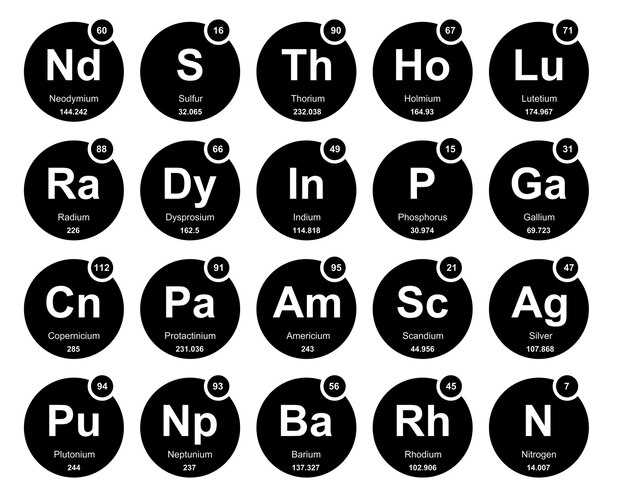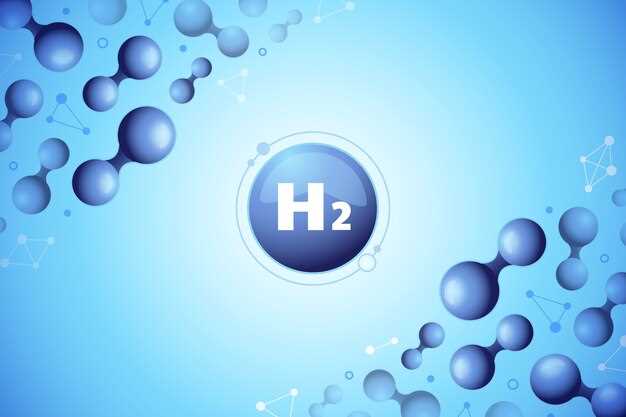
Are you tired of dealing with common allergies and itchy skin conditions?
Introducing our revolutionary hydroxyzine formulations:
Hydroxyzine Pam and Hydroxyzine HCL are two variations of hydroxyzine, an antihistamine medication known for its effectiveness in managing various allergy symptoms and skin conditions. While both formulations offer relief, it’s important to understand the distinct qualities of each to make an informed choice for your specific needs.
Overview of hydroxyzine

Hydroxyzine is an antihistamine medication that is used to treat a variety of conditions, including anxiety, itching, and allergies. It belongs to a class of drugs known as first-generation antihistamines.
Hydroxyzine works by blocking the effects of a certain natural substance called histamine, which is produced by the body during an allergic reaction. By blocking histamine, hydroxyzine helps to relieve symptoms such as itching, sneezing, and runny nose.
Hydroxyzine is available in two different formulations: hydroxyzine pam and hydroxyzine HCl. While both formulations are used to treat similar conditions, there are some differences between the two.
Hydroxyzine pam is the pamoate salt form of hydroxyzine. It is commonly used to treat anxiety, as it is thought to have sedative effects. Hydroxyzine pam is also used to treat itching caused by allergies and to induce sedation before or after anesthesia.
Hydroxyzine HCl, on the other hand, is the hydrochloride salt form of hydroxyzine. It is primarily used to treat itching caused by allergies as well as other conditions such as hay fever, hives, and dermatitis. Hydroxyzine HCl is also used as a sedative and for the relief of anxiety.
While hydroxyzine pam and hydroxyzine HCl have similar effects and usage, the main difference between the two is their chemical composition. Hydroxyzine pam contains pamoic acid and hydroxyzine, while hydroxyzine HCl contains hydrochloric acid and hydroxyzine.
It is important to note that hydroxyzine is a prescription medication and should only be taken under the guidance of a healthcare professional. The dosage and duration of treatment will vary depending on the specific condition being treated and the individual’s response to the medication.
- Hydroxyzine is available in tablet, capsule, and liquid form.
- Common side effects of hydroxyzine may include drowsiness, dry mouth, and blurred vision.
- Hydroxyzine is generally well-tolerated, but some individuals may experience more serious side effects such as irregular heartbeat, tremors, or seizures.
- Hydroxyzine is available by prescription only and can be purchased at most pharmacies.
- The cost of hydroxyzine may vary depending on the specific formulation and the pharmacy where it is purchased.
In conclusion, hydroxyzine is an antihistamine medication that is used to treat a variety of conditions, including anxiety, itching, and allergies. It is available in two different formulations: hydroxyzine pam and hydroxyzine HCl. While both formulations have similar effects and usage, the main difference between the two is their chemical composition.
Difference between hydroxyzine pam and hydroxyzine hcl
Hydroxyzine is an antihistamine medication that is commonly used to treat allergy symptoms, such as itching, hives, and nasal congestion. It works by blocking the effects of histamine, a substance in the body that causes allergic reactions.
Hydroxyzine PAM
Hydroxyzine PAM, or hydroxyzine pamoate, is a salt form of hydroxyzine. It is usually prescribed to treat anxiety and tension, as it has sedative properties that help promote relaxation and reduce anxiety-related symptoms.
Hydroxyzine HCL
Hydroxyzine HCL, or hydroxyzine hydrochloride, is another salt form of hydroxyzine. It is primarily used to treat itching and allergic skin reactions. Unlike hydroxyzine PAM, hydroxyzine HCL does not have sedative properties and is less likely to cause drowsiness.
Both hydroxyzine PAM and hydroxyzine HCL work in the same way to block the effects of histamine. However, they differ in terms of their chemical composition, making them suitable for different uses.
Hydroxyzine PAM Chemical Composition:
Hydroxyzine PAM is composed of hydroxyzine and pamoic acid. It is available in capsule or tablet form, and the dosage may vary depending on the individual’s condition and medical history.
Hydroxyzine HCL Chemical Composition:
Hydroxyzine HCL is composed of hydroxyzine and hydrochloride. It is available in tablet, capsule, and liquid forms. The dosage may also vary depending on the specific condition being treated.
It is important to consult with a healthcare professional to determine the appropriate form and dosage of hydroxyzine for your specific needs.
Chemical composition
The active ingredient in hydroxyzine pam and hydroxyzine hcl is hydroxyzine, which belongs to the class of medications known as antihistamines. Hydroxyzine is a piperazine derivative and has a chemical formula of C21H27ClN2O2.
Hydroxyzine pam (pamoate) and hydroxyzine hcl (hydrochloride) are two different forms of hydroxyzine that have the same active ingredient but differ in their salt composition.
Hydroxyzine pam is the pamoate salt form, while hydroxyzine hcl is the hydrochloride salt form. This difference in salt composition affects the way the medication is absorbed and how it is released in the body.
Both forms of hydroxyzine are available in oral tablets, capsules, and syrups.
Hydroxyzine is also available in topical formulations, such as creams and gels, for the relief of itching and skin irritations.
Before using hydroxyzine, it is important to read the label carefully and follow the instructions provided by your healthcare provider or pharmacist.
Hydroxyzine is primarily used to treat symptoms of allergic reactions, such as itching, hives, and rashes. It can also be used to manage anxiety and tension, to prevent nausea and vomiting, and to assist with sleep.
It is important to note that hydroxyzine may cause drowsiness and impair your ability to operate machinery or drive a vehicle. Therefore, it is advisable to avoid activities that require mental alertness until you know how the medication affects you.
If you experience any severe or persistent side effects, such as uneven heartbeat, difficulty breathing, or swelling of the face, lips, or tongue, it is crucial to seek immediate medical attention.
In conclusion, hydroxyzine is an antihistamine medication used to treat symptoms of allergic reactions, anxiety, and tension. It is available in two different salt forms, hydroxyzine pam and hydroxyzine hcl, which have the same active ingredient but differ in their chemical composition.
Effects and usage
Hydroxyzine is a medication that is commonly used to treat anxiety and allergies. It works by blocking certain chemicals in the body that cause allergic reactions. Hydroxyzine can also be prescribed to help manage symptoms such as itching, hives, and rashes.
When taken as directed by a healthcare professional, hydroxyzine can provide relief from symptoms of anxiety and allergies. It is important to follow the prescribed dosage and timing instructions, as well as any additional advice provided by your doctor or pharmacist.
Effects
The effects of hydroxyzine can vary depending on the individual and the condition being treated. Common effects include:
- Reduced anxiety and tension
- Decreased itching and hives
- Relief from allergy symptoms such as sneezing and watery eyes
- Promotion of relaxation and drowsiness
It is important to note that hydroxyzine may cause drowsiness, so it is advised to avoid driving or operating heavy machinery until you know how the medication affects you.
Usage
Hydroxyzine is typically taken orally in the form of tablets, capsules, or syrup. The dosage and frequency of administration will be determined by your healthcare professional based on your specific needs and medical history.
It is important to take hydroxyzine exactly as prescribed. Do not exceed the recommended dosage or take the medication for a longer period of time than instructed by your doctor.
If you have any questions or concerns about the usage of hydroxyzine, consult with your healthcare professional for clarification and guidance.
Side effects
Although hydroxyzine is generally considered to be safe and well-tolerated, there are potential side effects that should be taken into consideration.
Common side effects
Common side effects of hydroxyzine may include drowsiness, dizziness, blurred vision, dry mouth, and constipation. These side effects are usually mild and may subside over time or with a reduction in dosage. It is important to avoid activities that require alertness, such as driving or operating machinery, until you know how hydroxyzine affects you.
Less common side effects

Less common side effects of hydroxyzine may include headache, nausea, upset stomach, nervousness, and confusion. These side effects should be discussed with a healthcare professional if they become bothersome or persistent.
Serious side effects
In rare cases, hydroxyzine can cause serious side effects that require immediate medical attention. These may include allergic reactions (such as rash, itching, swelling, severe dizziness, or difficulty breathing), irregular heartbeat, seizures, or signs of liver problems (such as dark urine, yellowing of the skin or eyes, or persistent stomach pain).
If you experience any of these serious side effects, it is important to seek medical help right away.
It is important to note that this is not a complete list of side effects. If you have any concerns about side effects or have further questions, it is recommended to consult with a healthcare professional.
Availability and pricing
Hydroxyzine is a commonly prescribed medication and is widely available in most pharmacies. You can find both hydroxyzine hydrochloride (HCl) and hydroxyzine pamoate (PAM) formulations on the market.
The availability and pricing of hydroxyzine can vary depending on factors such as location, pharmacy, and insurance coverage. It is always a good idea to check with your local pharmacy for specific pricing and availability information.
In general, hydroxyzine is available in different forms, including tablets, capsules, and syrup. The pricing can also vary depending on the strength and quantity of the medication prescribed by your healthcare provider.
It is important to note that hydroxyzine is a prescription medication, which means you will need a prescription from a healthcare professional to purchase it. You should consult with your doctor or pharmacist to determine the appropriate dosage and form of hydroxyzine for your condition.
Some insurance plans may cover the cost of hydroxyzine, while others may require a copayment or out-of-pocket payment. If you have insurance, it is advisable to check with your provider to determine if hydroxyzine is covered and what your out-of-pocket costs may be.
Additionally, there may be generic versions of hydroxyzine available, which can often be more affordable than brand-name options. Your pharmacist can provide information on generic alternatives and their pricing.
Overall, the availability and pricing of hydroxyzine can vary, so it is essential to consult with your healthcare provider and pharmacy for specific details based on your location and insurance coverage.
